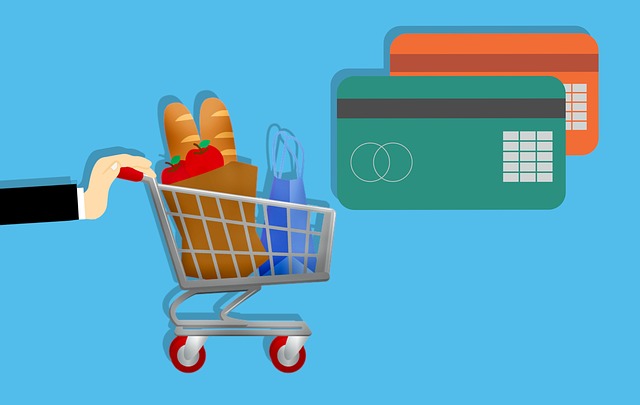
Let’s face it; according to Moosend.com, about 65% of customers abandon their carts. If you do submit cart emails to those customers, 45% of those emails are opened. Out of the opened emails, 21% of them are clicked. Out of the opened links, 50% of the buyers will purchase. In a separate study by Bronto.com, about 87% of the abandoned carts result in an $18 billion revenue loss every year. But with the emails, something can be done about it.
For these reasons, you’ll find that cart recovery is a high-performing instrument for a retailer like yourself. But what can you do to make the abandoned cart campaigns work? Well, on this page section, we will unfold the secrets.
1. Remind Your Customer About the Abandoned Cart
Many things can make a customer leave the cart. The most appropriate thing you should do is to make the customers remember that they have an item they intended to buy. How? First, mention the items in the subject line and the body of the email. Also, include an image of the product to tickle customer’s memory. The email’s goal is to remind the customer about the items and have them return to your online shop to complete a purchase.
2. Use “Calls To Action”
You surely want your customers to go back to the cart and complete the order, right? Well, you need to make that easy by distributing calls to action across the email. Note, the message used has to tell the customer what to do and how to do it. Moreover, ensure that the CTAs are not vague like “look at your cart” or “check out your cart.” Go hard with a phrase like “Buy Now Before The Offer Expires”.
3. Add “Other Related Products” or “Recommend For You”
On multiple occasions, a shopper will use your cart to make a product list and abandon the cart because they aren’t decided on whether the products are what they need. You can use this data to recommend related products to your customer. Therefore, have messages like “searched this, searched that” or product suggestions that give your customers options on what to choose. If they didn’t like the blue suit they had on their cart but the black suit you recommended them, they could choose the option you offered them and complete the order.
4. Offer Motivation
60% of cart abandonments come from discouraging fees. So what do you do? First, identify the customers that left the cart at the checkout stage and try to offer them free shipping in your emails. You can also do follow-up emails to the previous messages with things such as discount offers and reduce what you expect on profit. Such incentive options are excellent ways to take advantage of the loyalty program.
5. Pay Attention to Where the Customer Leaves the Cart
Use that point at which they left the site to craft a personalized message to your customer. For example, if someone left at the billing page, send a message which includes direct contact to your customer service team to help with the checkout and offer payment-related queries. Also, note that customers may abandon their carts without the intention to do so. According to a Shopify study, 24% of customers will say they left the store because the site crashed, another 15% said the site timed out, hence no purchase was complete.
6. Use Social Proof for Credibility.
You have to create trust with your shopper using social proof. Suppose you are wondering how possible it is, then you will be surprised that reviews are one way to do it. So, have thoughts on the abandoned cart messages to help you connect with the 84 percent of customers who trust in reviews to learn about products.
7. Ensure Email Body is Quality
This is a very important technique you should have; try to create a fantastic abandoned cart template. However, you need to take your time and come up with a better copy. Note that you are communicating with shoppers deep down the funnel. Therefore, you have to capture their attention to make them buy. You can use the message to boost shopper confidence; therefore, make sure the email message body engages using your brand voice. Therefore, do not just stick with where the customer is left unattended.
Things to Do to Avoid “Coupon Abuse”
This means setting a limit on the number of times a shopper receives an incentive through abandon cart messages such that the buyer does not have to expect a coupon each time they leave their cart. This approach protects you from buyers who consciously go to the cart to get a coupon email.
In such cases, you can add that customer to a coupon suppression list for a temporary period to prevent them from getting a coupon if they already received one just recently. But remember that you need to continue to send those abandoned cart email messages to the customer as usual.
Testing Abandoned Cart Email Messages for Effectiveness
A/B tests are an excellent way to manage and optimize messages for cart recovery. So how do you do it? Here are some ways:
- Add a discount rate to your subject line– at the beginning or middle.
- Ensure that you know whether your audience resonates with one or more sentences
- Know whether you need a product or lifestyle images
- Check your calls to action—ask yourself which version of the need is better.
- Investigate whether you need to include product price in email copy
- Find out the kind of discounts that will work best for the customer.
Once you know all these, what follows is to ensure that you are implementing the right discoveries to your abandoned cart templates.
Note that about 2-thirds of customers are likely to complete a purchase when someone sends them personalized product promotions. Therefore, make it a principle rule to do that with your messages.
FAQs
What related articles are available for further reading on NetSuite and marketing tips?
Their article offers a variety of related articles for further exploration on NetSuite and marketing tips. These articles include "Scripts Can Talk!", "NetSuite Tip: Work Order Results in Saved Searches", "SW2017 ? More / Better / Forever", and "Tips for Creating a Marketing Campaign in NetSuite." These resources provide valuable insights and tips for utilizing NetSuite and improving marketing strategies.
How can I save and edit email templates for future use in NetSuite?
To save and edit email templates for future use in NetSuite, you need to follow these steps:
- Select the option to save the email template.
- Once saved, the template will be stored for future use.
- You can access the saved template to edit or revise it as per your requirements.
- Edit the template with any necessary changes or updates.
- Save the modifications made to the template for future use.
By following these steps, you can easily save and edit email templates in NetSuite for future use.
What options are available for specifying sender information and tracking outgoing emails in NetSuite?
In NetSuite, specifying sender information and tracking outgoing emails can be done by users with a Marketing Role. They can set the From Name, From Email Address used for the campaign, Reply-To Email address, Campaign Domain, and other variables on the Marketing tab. Users can also select a Subscription type like Marketing or Newsletters. The Track Outgoing Email feature can be enabled by checking the respective box during setup. Additionally, users can add multiple From Email Addresses under Setup > Sales & Marketing Automation > Campaign Email Addresses. For those without a Marketing Role, some options may not be relevant. Coordination with the IT department may be necessary to configure the Campaign Domain and manage From Email Addresses effectively.
How can I contact Seibert Consulting Group (SCG) for more information on NetSuite Email Templates or a free consultation?
To contact Seibert Consulting Group (SCG) for more information on NetSuite Email Templates or a free consultation, you can reach out to them in the following ways:
Call their phone number at 760-205-5440.
Send an email to hello@seibertconsulting.com
Keystone Business Services is your trusted NetSuite solution provider and integration partner.
For better cart emails and messages that generate leads, feel free to talk to us at 760-205-5251 or hello@seibertconsulting.com

